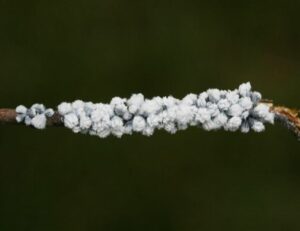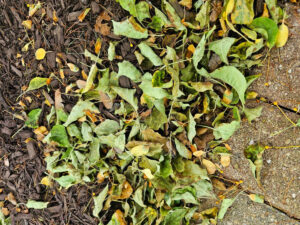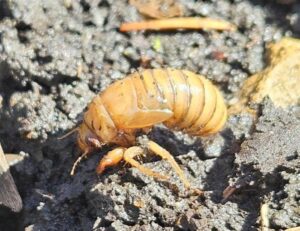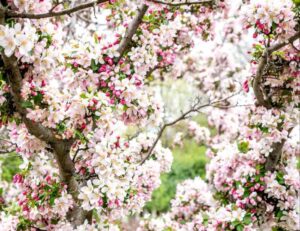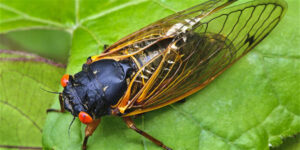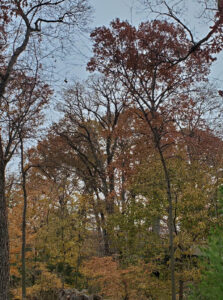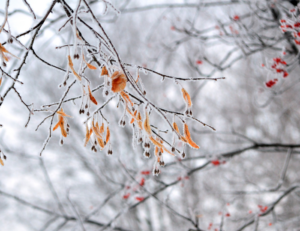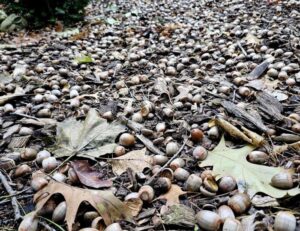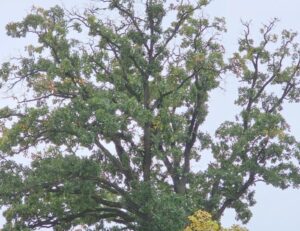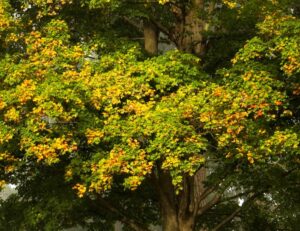There was a ‘front page’ story in the Daily Herald on Oct 5th on this very topic. As such, we thought we’d add a little information for those who may be interested.
Before we get into that, allow us to mention the following…
While standing in a client’s yard the other day, they mentioned how much they enjoy our emails, saying they had just read the one on acorns and ‘Mast’ years. This client didn’t have any of the types of trees that produce nuts but stated he and his wife love the knowledge they possess after reading our emails and then sharing with friends or relatives who have issues we’ve covered. We loved hearing that, and hope you all feel the same!
Now, as for the acorns pictured above…they belong to us, Craig and Sue Casino, owners of Tree Green. This is actually our fourth trailer full of these pesky little things and they are still dropping onto our roof ALL…NIGHT…LONG as Lionel Ritchie sang.
The sounds of Acorns dropping onto our roof, waking us at night, sounds like a sporadic yet never-ending hailstorm, 6 weeks and counting. Some might say ‘I could not live with that, I’d have to cut those trees down’ but here’s something to consider…
Trees are too valuable to a property aesthetically, for the Summer shade and cooling effect they offer, and for the wildlife that depends on them, to remove because of a few weeks of noise.
Falling Acorns in mast years only last about 6 to 8 weeks, once every 3 or 4 years. We figure that’s a small price to pay for what these trees give us day in and day out every year.
Sue and I have lived in this house for 33 years and this is by far the worst ‘Mast’ year we’ve ever experienced and the Daily Herald agrees enough to have written a front-page story just yesterday.
The article states that if Oaks and other trees dropped fewer but an equal number of nuts every year then the wildlife that they support would eat all of them and, as such, trees wouldn’t reproduce so trees have taught themselves to have ‘Mast’ years in which, every few years, they drop a banner crop of nuts. As such squirrels, chipmunks, and even turkeys eating the pieces supplied once car tires crush them, can’t possibly consume all of them. This is what we meant when we said Mast years are a tree’s way of ‘ensuring its own species survival’.
CAN THESE NUTS AFFECT OUR LAWN?
For those of you with Oak, Walnut, or Hickory trees you may, as the article stated, be experiencing massive amounts of these seeds this year, or if this isn’t your tree’s mast cycle it may happen on your property next year or the year after.
Walnut and Hickory nuts are much larger than acorns so most folks rake those up. They are large enough to not only be unsightly laying on the lawn but could also result in a twisted ankle if you were to step on them. But what about the smaller and much more plentiful acorn? Most folks just leave them lying in the yard.
Acorns pretty much disappear into the lawn over time due to their smaller size. Normally, letting them sit on the lawn to dissipate naturally is fine in limited numbers but when there are tens of thousands a little extra care is required for the sake of your grass.
Having multitudes of acorns being pressed into the soft Fall or Spring soil, whether from our feet or from lawnmowers, especially riding mowers, affects the lawn by closing down the macro and micropores in the soil. We all realize how important it is to aerate and ventilate the lawn every few years, but, pressing these hard nuts into the soil is the exact opposite of aeration so it’s not good for the lawn or even the tree roots that depend on open pores in the soil for water and oxygen.
We’d recommend frequently blowing acorns into a centralized spot or two and then raking them up and disposing of them at least weekly or they will seed themselves and create roots. Once the roots adhere to the soil, raking won’t get them out of the lawn very easily. You’ll have to hand pluck them one by one or roll them under the bottom of your shoe to break them free of the soil.
At the end of the Herald article, they mention that big old mature trees are stressed due to the fact that age may be catching up with them which has been hastened by extreme weather contributing to their decline. The article goes on to say that everyone should consider supporting their trees.
Translation…We’ve explained many times the negative effects of the extremely wet years of 2008 through 2019, and now four years of drought, have played and will continue to play out over the next 10 to 15 years. Supporting your trees is ‘code’ for watering them during the usually dry months of July and August and of course, high-pressure root fertilization.



